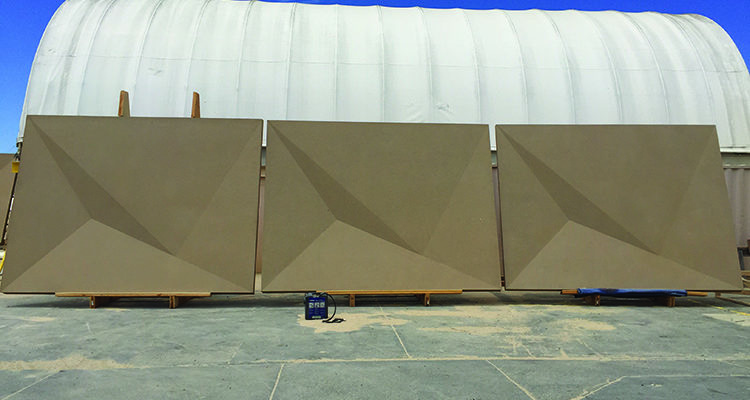Specifying a Tolerance
Color tolerance is important to specify for any project and needs to be understood by suppliers, fabricators and clients. Many fabricators use a reference color placard and a trained quality control operator to check color. To ensure that color references remain true to color, they should be stored properly to avoid sun exposure and replaced at the supplier’s recommendations.
However, simply using a reference color placard may not suffice for color critical operations, such as architectural applications and mass-produced parts mated during assembly. For color critical applications, a color meter should be used to measure color and confirm it is within tolerance.
At Kreysler & Associates, we create visual tolerance boundary samples to illustrate the maximum allowable color shifts in each direction to the customer. The samples can be measured to create a tolerance. Often times, only a lighter and darker boundary sample are made, since that is the typical color variation for us. If other shifts are expected, samples can be made that illustrate more red, green, blue or yellow shifts. Customers can then use the samples on site to confirm product conformance. Fabricators without a color meter can use the samples as an internal quality control check.
In the coatings industry, Delta E units are used to express the measure of change in visual perception of two colors. A typical tolerance that gelcoat suppliers will meet is 0.5 Delta E. Beware that color can be shifted another 0.5 Delta E just from processing variation. For most applications, a 1.5 Delta E tolerance on color critical projects is acceptable to the client, but this can be hard to meet when using multiple batches of gelcoat. When mixing gelcoat in house, color can be corrected before use, but there will still be variation from processing. Although it’s not always possible, using the same gelcoat batch for all products is a great way to minimize color variation.
Monitoring and Color Control
Once a color has been chosen and a tolerance set, it is important to monitor the color and ensure that parts are within tolerance. Most fabricators let gelcoat companies handle color control, but monitoring incoming materials and final parts is just as important. At Kreysler & Associates, the most commonly seen issues with color are due to processing and incoming material. Controlling temperature, initiator percent, atomizing air pressure and release agent will help minimize color variation.
To ensure incoming material is not an issue, a color placard should be made with the same processing steps as the final parts for each gelcoat batch. The placard can then be used to verify that the incoming material will match. With a color meter, this match can be verified numerically and plotted on a control chart as a pre-emptive quality control step.
In summary, handling color in house offers benefits beyond the ability to control and quickly custom match. When tolerances are discussed and set up between the supplier, fabricator and customer, costly mistakes can be avoided. Once understood thoroughly, color can become a tool rather than a burden, allowing shops small and large to make unique products.


